A deserted top secret Soviet underground communications hub
Military and government communications have been regarded as extremely important at all times.
With the start of the Cold war, the problem of consistent information transmission even in case of a nuclear war became a top priority.
To solve the problem, a network of reinforced underground communication centers was built in the Soviet Union.
These centers ensured passage of orders from the Supreme High command to the force located in the West, including the countries of the Warsaw Pact. One of these formerly top secret sites is described in this post.
1. The main entrance to the site is hidden inside a small dazzle-painted plywood building. Vent kiosks that were used for positive pressure ventilation of the site can be seen in the background.
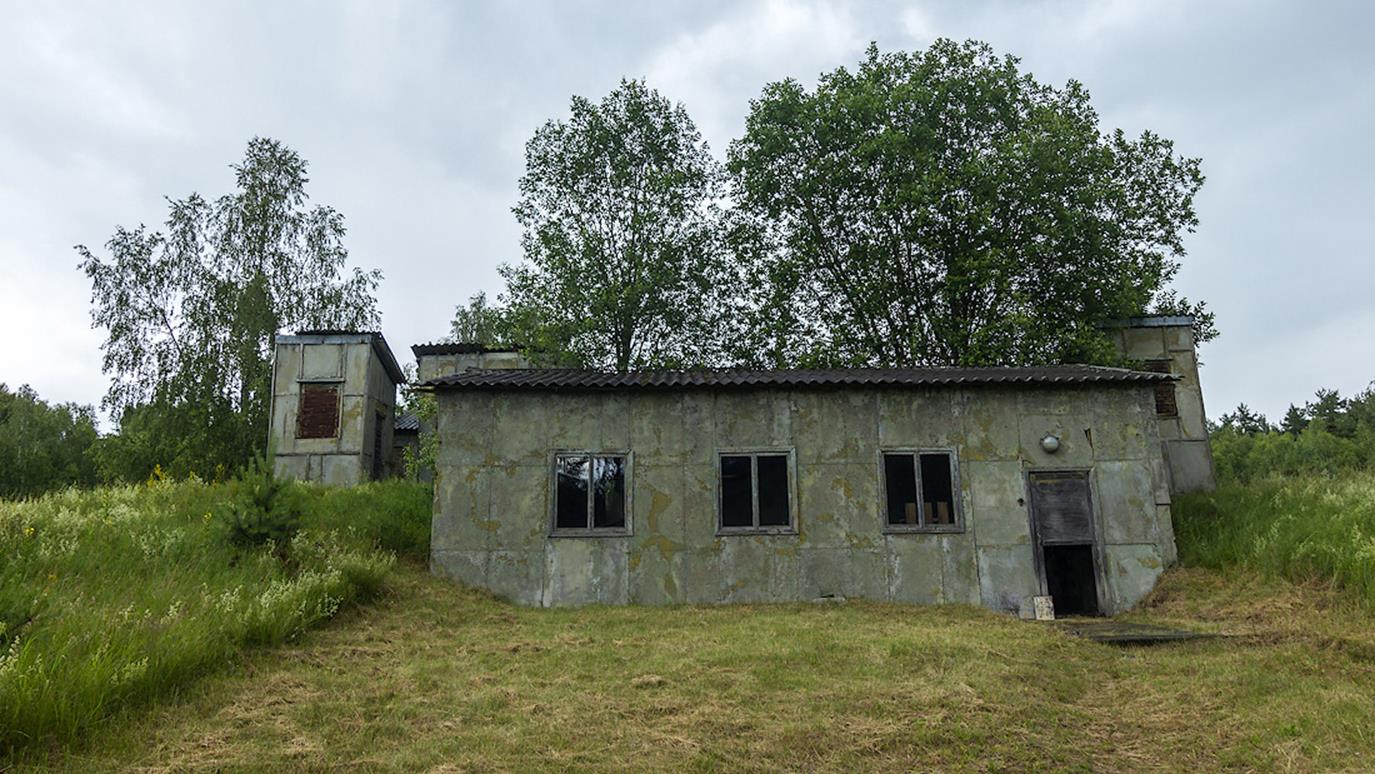
2. Inside the building there is a concrete stairway.

3. A plaque commemorating the workers who built the structure in the years 1968-1971 is installed on one of the walls.

4. A formidable shielding door weighing 3 metric tons (made of ERA) that is capable of withstanding a nuclear explosion impact wave blocks the entrance at the end of the stairway.
The only way to get in was to say the code word to the security man on the other side, using the phone.

5. Another door, smaller in size, is behind the first one. It is hermetically sealed.

6. There is a phone on the wall as well.

7. After the second door there was a third phone. A fire hydrant and a hermetically sealed valve control panel were also located here.
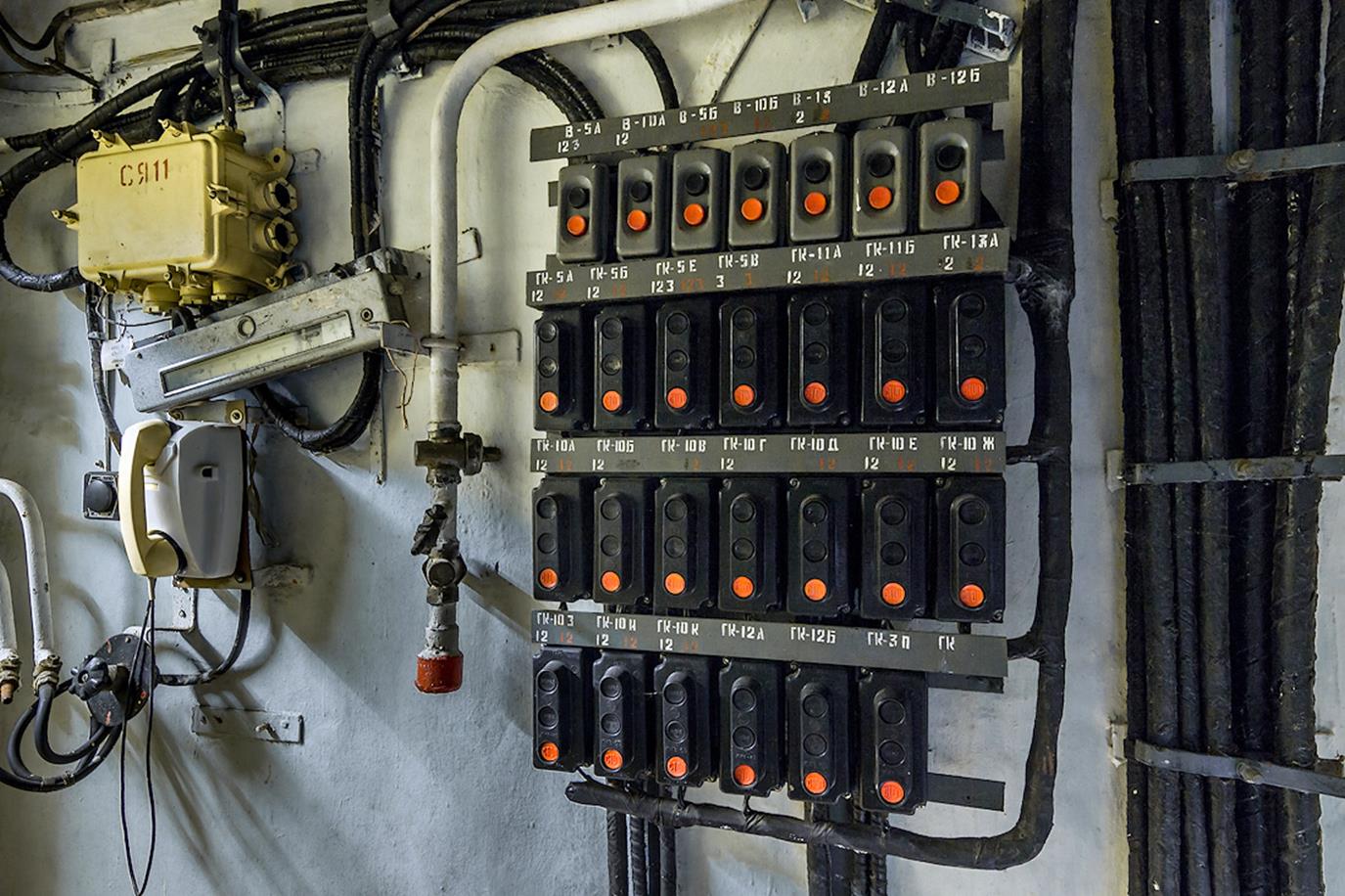
8. Further down, a system of airlock chambers was set up. Inside the object they maintained a pressure higher than normal in order to protect it from chemical warfare agents. The pressure gradually increased from chamber to chamber.
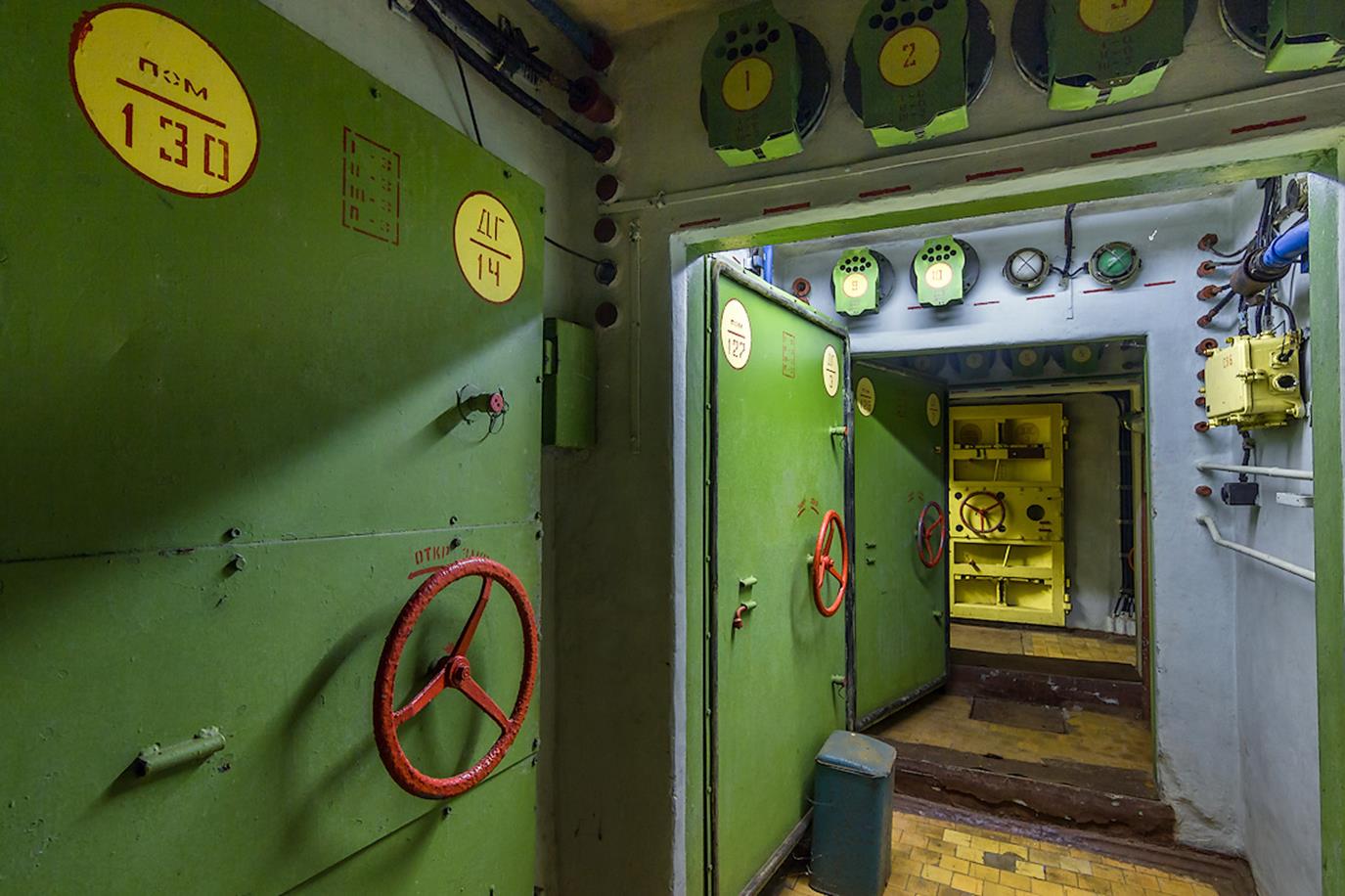
9. Then there are long hallways with multiple partition walls inside. The interiors resemble those of a submarine. The site is divided into three levels, each with an area of 1200 sq. m. (approx. 13000 sq. ft.)

10. The uppermost level is almost entirely filled with information transmitting devices. There still are large quantities of radio gear.

11. All the communication hubs were surrounded with antenna fields. The communication with the antennas and the nearest objects was carried out via cable lines.
All the cables were clad in double airtight cable sheaths, with heightened pressure maintained inside them.
Any defects of the cables were detected by a manometer installed inside the bunker, which allowed monitoring the condition of the communication lines and carrying out timely repairs when needed.

12. The data from various channels was transmitted into this huge line equipment hall.
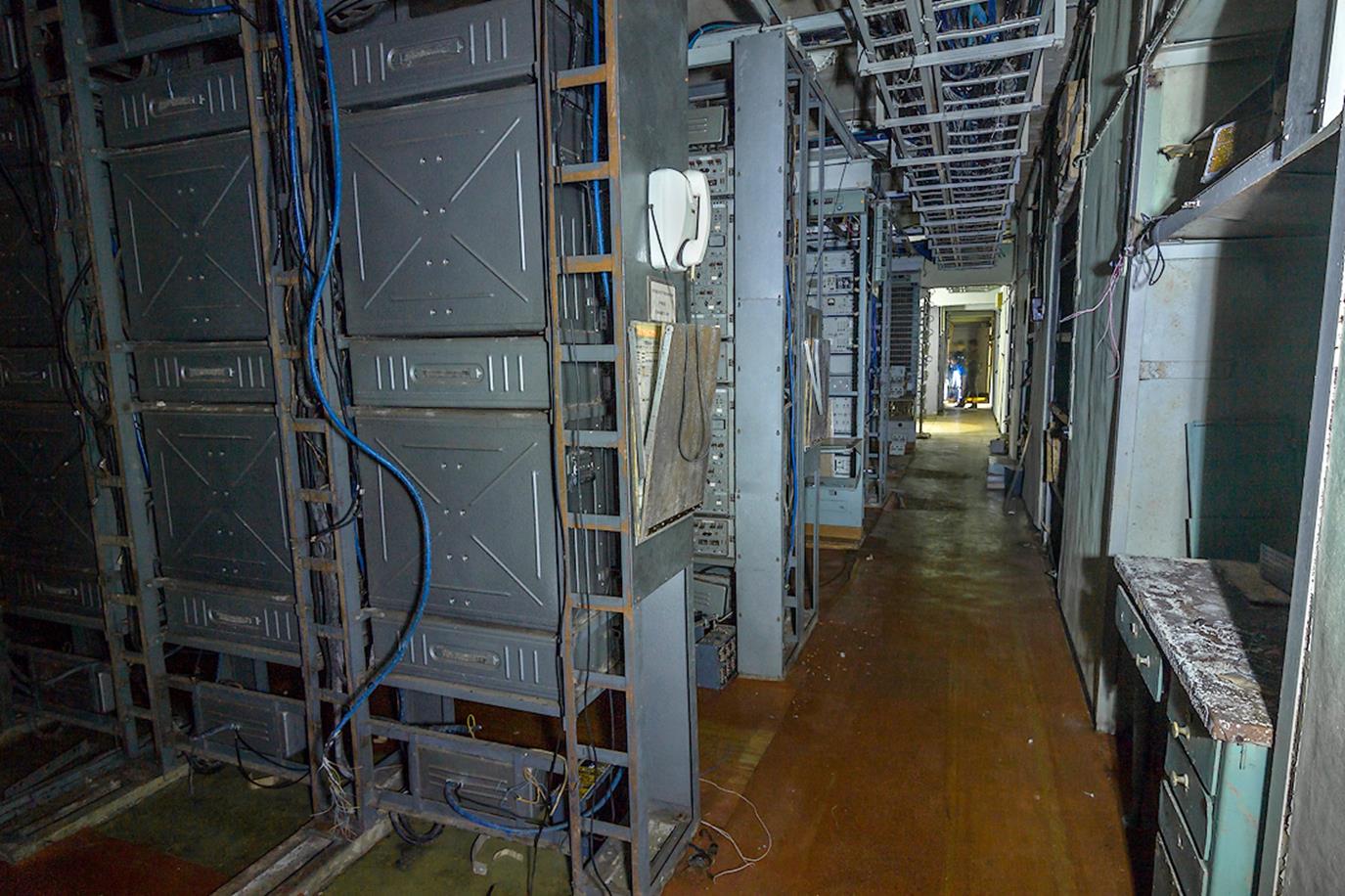
13. Each specific piece of the top secret data was first encrypted using the secure communications equipment and then transmitted to a corresponding commutator.

14. Operators would further process the signals in order to be able to pass them on.

15. Special devices were used for preventive equipment maintenance, mounted on wheels for easier transportation.

16. Inside a soundproof room the long-distance calls commutator was located. Speakers were connected to each other in here.
The job was done primarily by female employees.

17. It was possible to make a call to any part of the Soviet Union and any of its allies, including Cuba.

18. Address call signs for hubs that could be contacted were indicated on a special table. “Orientir” is an unprotected communications hub, the operator training center.

19. In order to ensure that all the clocks of the hub are synchronized, a master clock was installed.

20. The exact time was transmitted to all the clocks of the bunker by a doubled mechanical clock system with an electromagnetic drive.

21. New electronic equipment was installed around 1985 that used an external radio signal for setting the accurate time.
However, the new equipment soon started failing, and the old and more reliable system had to be relaunched.

22. During peace-time the garrison took their meals in the canteen of the military station, and those on duty had their food brought to them in thermal flasks.
In case of a military conflict, there was a food unit inside.

23. During battle exercises food was cooked in this kitchen.

24. Next to it is a room for washing the dishes. Naturally, it had to be done by hand.
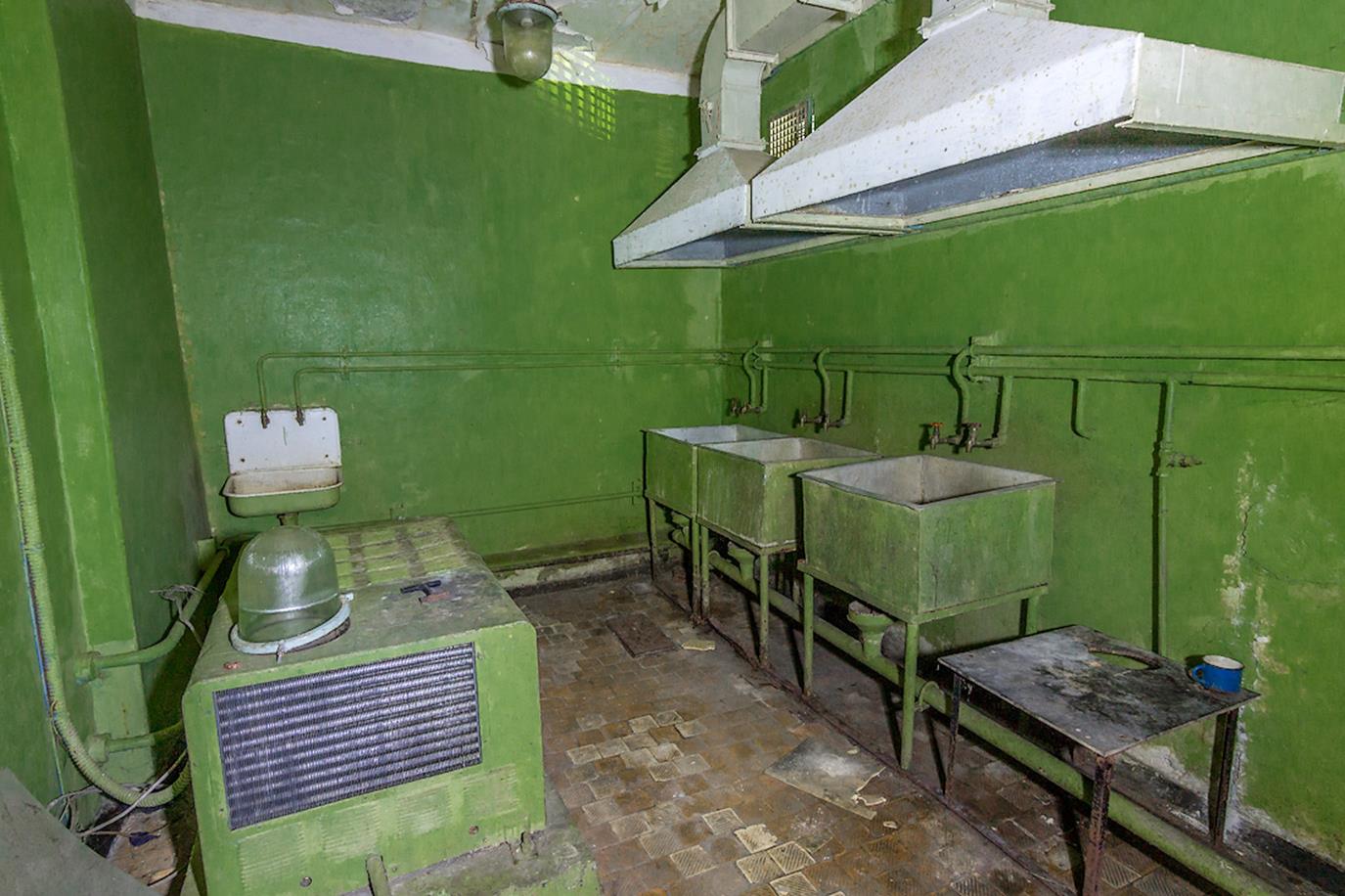
25. There were also three freezer chambers on the site for food storage.

26. The two lower levels of the object are not related to communications and are entirely dedicated to systems that would allow self-sustainable existence for 2-3 weeks.

27. Vent systems are located on the -2 level.

28. 16 ventilation systems existed in the bunker: a positive pressure one, a recirculating one, a drawing one, one for breathing, one for equipment cooldown etc.

29. ВThe air in each system had to be purified, cooled, dried or humidified.

30. A cyclone filter was installed for coarse purification of the air coming from the surface. The air passed through a micromesh partially submerged into oil.

31. In case of chemical war agent’s usage, coal filters could be used for ventilation.

32. The air used for cooling the equipment passed through a jet water flow inside the refrigerator conditioners (KD-20).

33. These units maintained the necessary temperature and humidity of the air.

34. In some of the systems valves with an electrical drive were installed.

35. The automatic drives always had manually controlled back-ups.

36. Depending on the current operating mode of the base, the operator adjusted the air supply scheme.
In cases when the airflow from the surface was impossible, there were air reserves 4000 cubic meters in volume (approx. 1 million gallons), that were stored in 96 designated tanks.

37. The pressure of 50 atmospheres is still maintained inside the tanks.

38. The numerous pipes from the tanks go into the adjacent room.

39. Here with the help of a special panel the airflow from the tanks to the vent system was managed.

40. A compressor and two receivers are installed there in order to even out pressure fluctuations.

41. The heaviest life sustaining equipment was located in the -3 level.

42. On the stair landing there are posters depicting the life-sustaining systems plans.

43. All of the rooms on the technical floor were equipped with pressurized doors.

44. There were several pump units on the site. The piping was colored according to its purpose in the system.
The blue one was intended for household and drinking water, the red one — for putting out fires. The electric heaters were also located here. Behind the wall of the room there were some reservoirs.

45. The water was also used for cooling the equipment.

46. Also, there were 4 artesian wells.

47. In the smaller pump room household and feces waters were treated.

48. Refrigerator units working on freon were used for cooling the water. There are two tanks for water and two for freon.

49. The refrigerator was powered by two compressors, a receiver, a heat exchange unit and freon tanks.

50. Every compressor was joined with a receiver, a container needed for evening out the pressure.

51. The water and the freon were pumped through heat exchange units.

52. The manometers on the heat exchange unit were equipped with fluorescent screens.

53. The power source for the electric system of the complex was a diesel generator.

54.

55. The electric current strengths here reached thousands of amperes, that’s why the cutout switches are so huge.

56. The control panel is very complex, large and impressive.
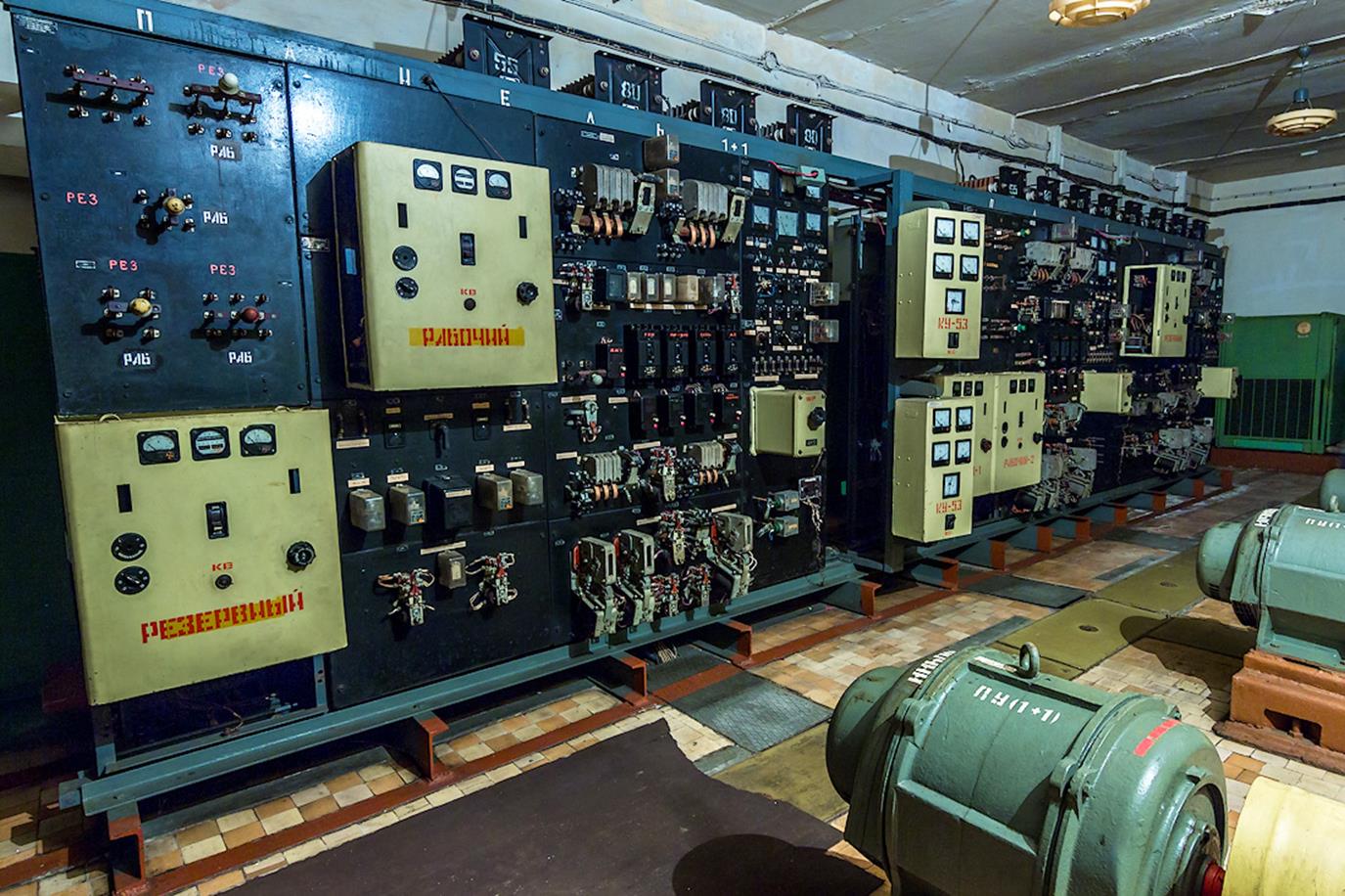
57. The batteries take up a large hall.

58.

59. The management of the electrical system was conducted via the main switchboard.
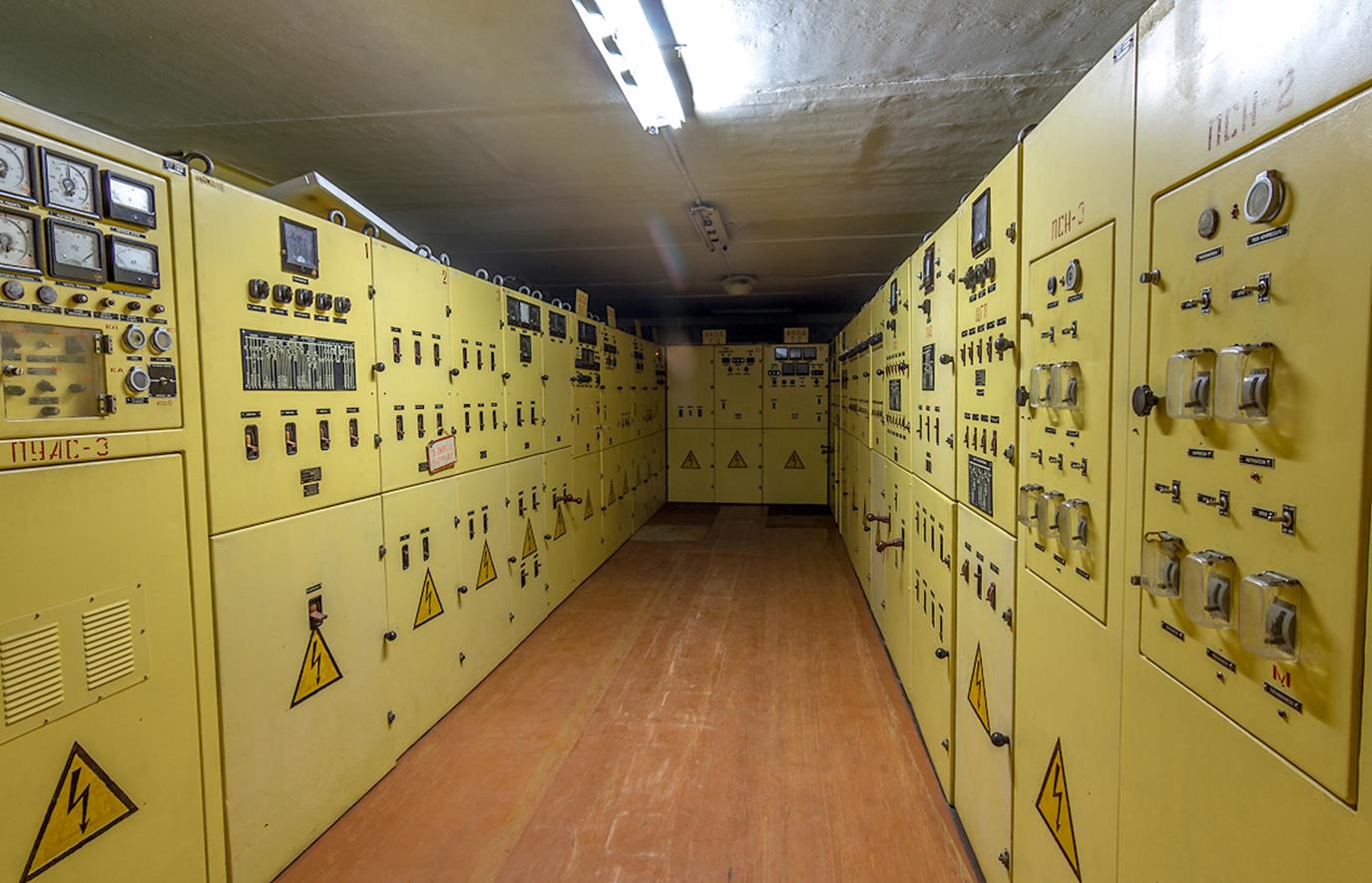
60. It was mounted on a platform suspended from the ceiling on shock-absorbers.
This allowed to protect the equipment and communications from outages in case there is a seismic wave impact from a nuclear blast nearby.

61. On the exterior walls there are closets where spare parts were kept.

62. The diesel generator launching device.

63.

64. The duty shift operator’s workplace.

65.The holy of the holies of the bunker – the room with three marine diesel generators, each with a power of 500 kW.
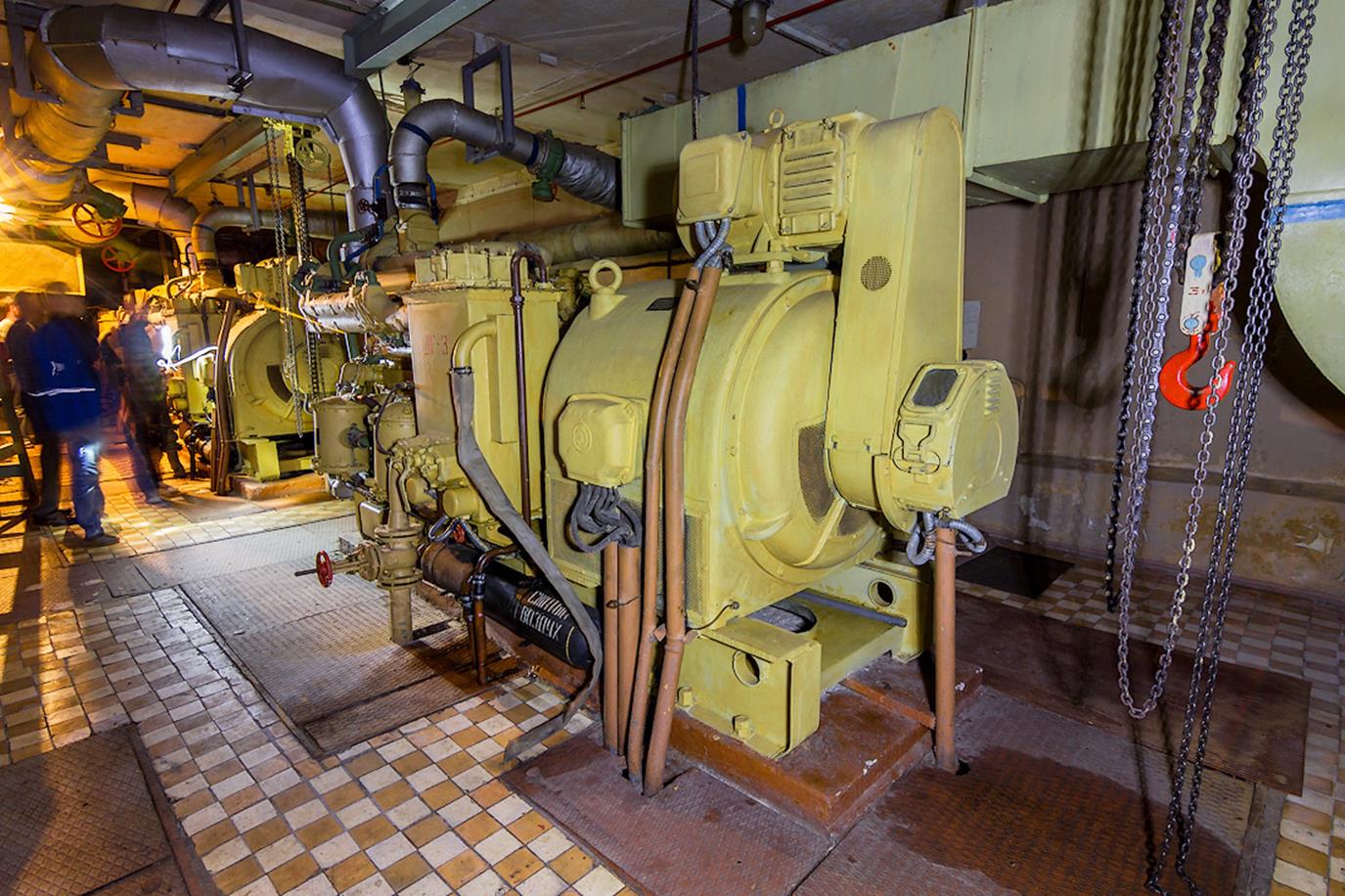
69. They provided an independent power supply for the object and the military community in case the power cable from the nearest electrical substation broke down.
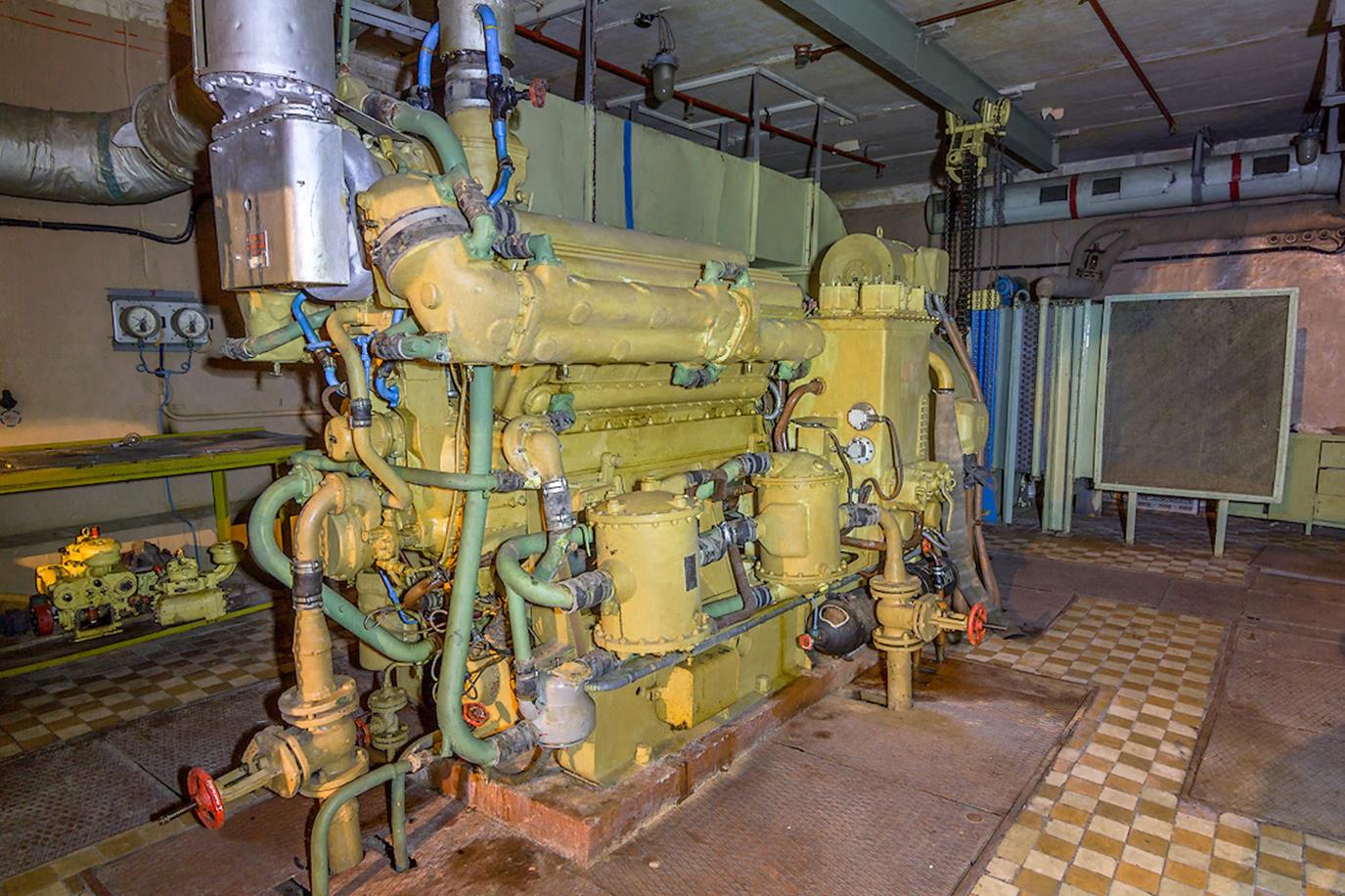
68.
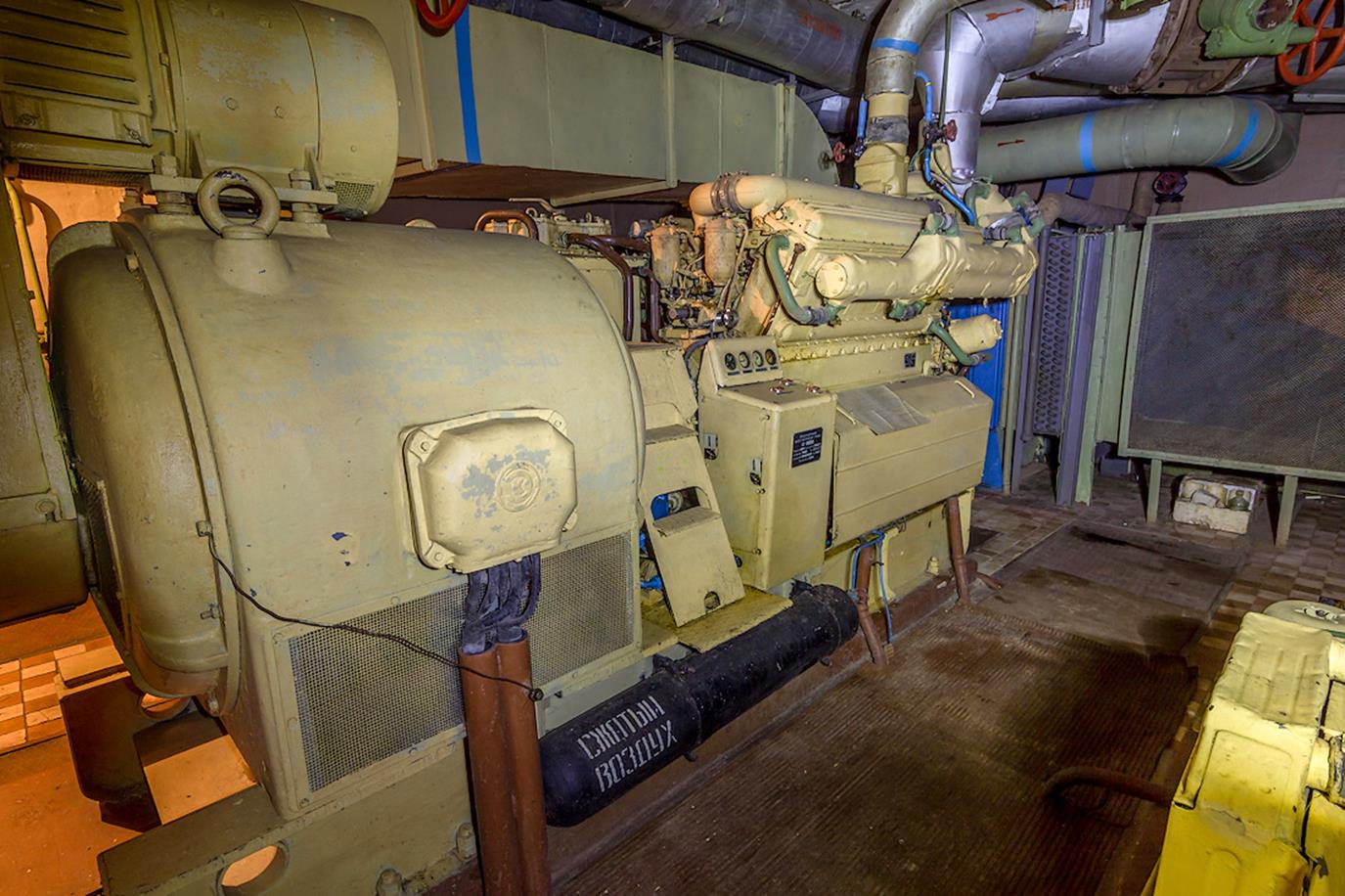
67

66.

70

71. The management of all the utilities systems of the complex was done from the control room.
Almost all of the space above the panel is occupied by a mnemonic scheme of the ventilation systems, doors and hatches.

72. On the right is the much less complicated mnemonic diagram for the water supply system.

73. In here, two people usually worked: the technician and the communications operator.

74.

75.

76. СFrom a single control panel the operator could manage door blocks, ventilation kiosk air gates, hermetic valves, filtering and vent systems, numerous water pumps, refrigerating equipment, smoke control systems, air pressure in each separate room and all of the 16 vent systems.

77. The operator was able to make a call to any part of the object with watchmen present.

78. The construction of the control room, just like the main switchboard, is a platform on suspension supports mounted to the ceiling.

79. The control room is the most impressive part of the bunker and the last one we visited.
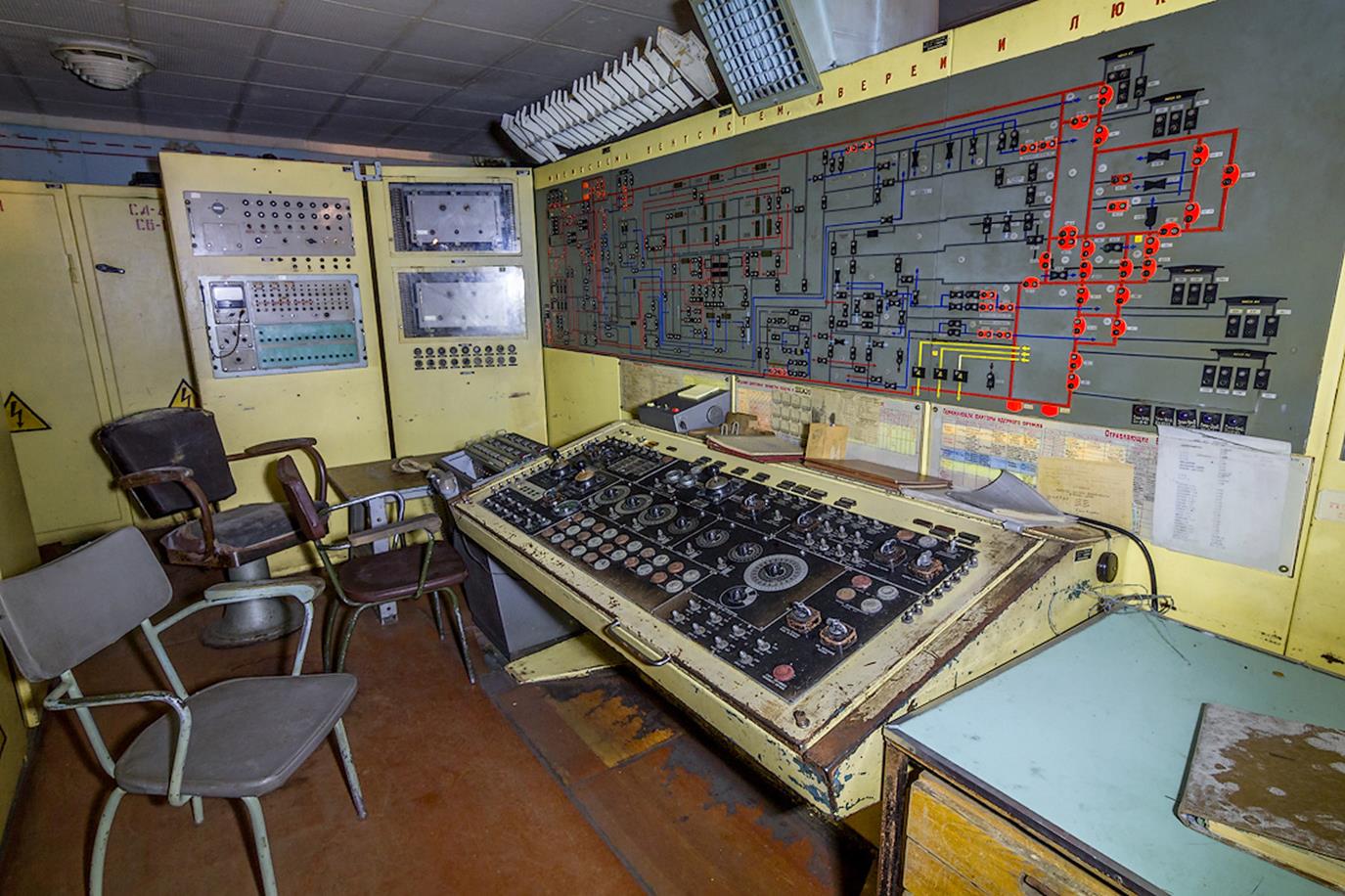
Images by deletant, reproduced with permission






